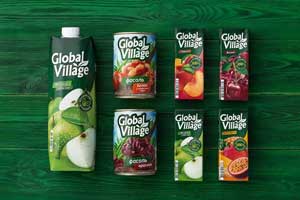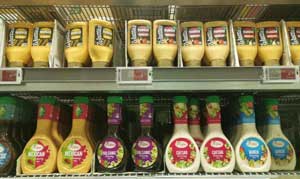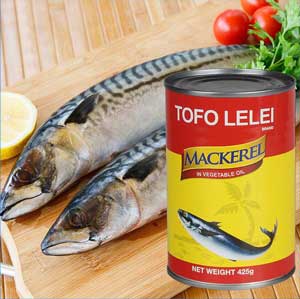The Role of EDTA in Various Food and Beverage Industries
What is EDTA? You can not get the answer on Wikipedia. Because Wikipedia has another name for the EDTA.
Wikipedia says, "Ethylenediaminetetraacetic acid (EDTA) is an amino polycarboxylic acid with the formula [CH2N(CH2CO2H)2]2.
You can find more details about the EDTA on this page.
EDTA has some different grades. And the different grades have different uses. The industrial-grade EDTA can be used in water treatment. IRO Chelating is supplying. The Pharmaceutical grade EDTA is a prescription medicine, recommended for the treatment of lead poisoning. Yes, the Chelation therapy. And the food-grade EDTA can be used in some food.
Now, we will see how the EDTA plays a role in the food industry.
EDTA is used as a preservative in many foods like dried and canned beans, mayo, and cooked canned seafood to preserve flavor and color. Using preservatives also reduces food waste.
There are various forms of EDTA and the one added in processed foods is a food-grade organic compound. It gives increased shelf-life to the product as well as helps retain its original flavor. Canned products that include seafood and vegetables, carbonated beverages, and sandwich spreads such as mayonnaise, are some of the common foodstuffs that contain EDTA.
Grain-Based Products

A form of EDTA called iron EDTA is sometimes used to increase the amount of iron found in grain-based products, including cereal bars and ready-to-eat breakfast cereals. Any fortified grain products may contain EDTA, as it helps stabilize vitamins.
Beverages

The soft drinks industry certainly cannot do without EDTA. It is added to protect the flavor and color of the drink. It ensures that the drink does not lose its flavor until the bottle is opened.
Soft drinks that contain sodium benzoate and ascorbic acid particularly contain EDTA. Ascorbic acid when combined with sodium benzoate produces benzene, which has been deemed as carcinogenic to humans. However, in the presence of EDTA, the amount of benzene formed is very less, which is insignificant.
Quite a few carbonated drinks manufactured under Coca-Cola and PepsiCo have EDTA. Be it the Mountain Dew, the fruit-flavored Fanta, or the Diet 7-UP, these beverages contain EDTA.
Alcohol

Among alcoholic drinks, beer contains EDTA. In beer, EDTA acts like an anti-gushing agent, which helps minimize gushing after opening the bottle. The addition of EDTA is one of the steps taken to prevent or inhibit gushing upon opening the bottle.
Even distilled alcoholic beverages such as whiskey, vodka, rum, and brandy contain EDTA. In these beverages, it acts as a clarifying agent. The color and turbidity of the beverage are found to be stable due to the presence of EDTA.
Flavor Enhancers

Condiments or flavor enhancers such as mayonnaise, ketchup, jam, and sauce are also added with EDTA, primarily to give them a longer shelf-life. So, these products that you see on the shelf for months without getting spoiled are due to the presence of EDTA in them.
These products, including commercial cheese and butter, also act as sandwich spreads. They are not free from this food additive. The commercial brand salad dressings that are often added to pasta, rice, and salads to increase flavor, also contain EDTA.
Canned Seafood

Canned products that are ready to serve have also not escaped the addition of EDTA. Cooked canned seafood; be it fish, shrimp, crab meat, or clams contain EDTA. It helps inhibit the growth of struvite, crystals that comprise ammonium, magnesium, and phosphate. These substances are natural constituents of fish but form crystals while heating and canning.
Although these crystals that appear similar to pieces of broken glass are not a cause for concern, they may interfere with the flavor and taste of the canned product. Hence EDTA is added to prevent the growth of the crystal structure of struvite. Artificial colors are often added to enhance the visual appeal of canned seafood.
The addition of EDTA also helps prevent discoloration and aids in retaining the flavor of canned seafood. Canned shellfish, including shrimp and clams, often contain EDTA to prevent discoloration. EDTA also helps keep condensed milk from thickening, maintains the color of dried egg powder, and maintains the flavor of milk. It acts as an antioxidant to keep packaged meat from turning brown due to contact with oxygen.
Canned Vegetables

Cooked canned vegetables that include beans, peas, cabbages, corn, mushrooms, carrots, asparagus, tomatoes, and artichokes, also have EDTA. It helps protect the natural color, flavor, and overall quality of food. It acts as a sequestering agent, meaning it binds or sequesters the metal in the can and stops it from reacting with food that causes discoloration or food degradation. So, whether you choose red, pink, or dried lima beans when you buy them in canned form, they are likely to contain EDTA.
Processed fruits and vegetables, such as canned mushrooms, may contain EDTA. The EDTA binds with any traces of metal left in food from processing or storage in metal containers, keeping the metal from causing artificial colors to break down or food to spoil or discolor more quickly. Fruits and vegetables that sometimes contain EDTA include frozen potatoes, dried bananas, and canned beans.
Conclusion
As aforementioned, EDTA is a permitted food additive, found in very small amounts in foodstuffs, and is safe for consumption. Although EDTA, when taken in substantial amounts can be toxic, the amount present in foods is too small to pose any health risk.
The amount of EDTA that can be used by manufacturers is regulated by the FDA. the ingredient is GRAS (Generally recognized as Safe) based on numerous studies on both humans, animals, rats, and in vitro (test tubes) where they have administered EDTA in very large doses. The reason it is GRAS is that in humans and animals it is eliminated by the kidneys in feces and urine and even at very high amounts (well in excess of what would be used in food) there have been no health or safety concerns over long periods of time.
For more details, please see the Food Additive Status List from FDA's official website.
